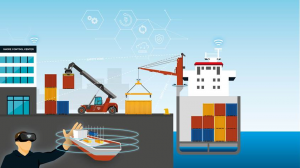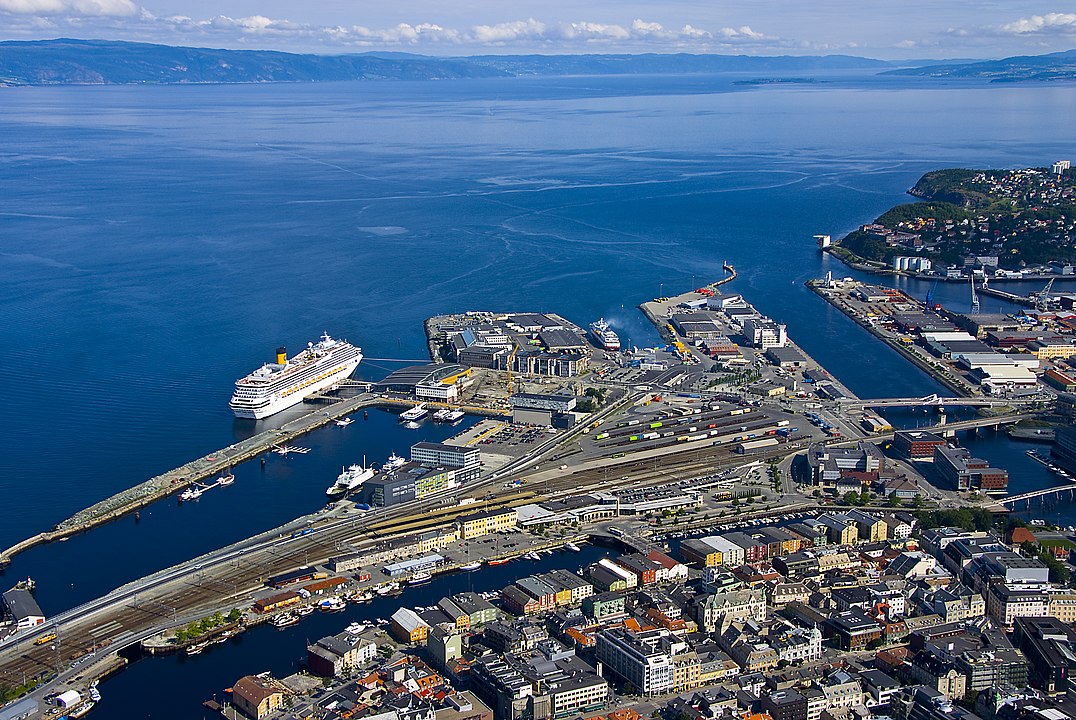The project “Advanced, Efficient and Green Intermodal Systems” (AEGIS) will develop new and more competitive systems for waterborne transport.
Inland and short sea ships and their ports are critical parts of Europe’s transport system. With stricter requirements to decarbonization and reduced noise and pollution from the transport sector, the importance should only increase! However, the convenience and flexibility of road transport still tends to trumph sustainability goals.
The AEGIS project will show that autonomous ships and automation in ports can make waterborne transport much more flexible and user-friendly while further reducing the environmental impact of EU transport.
Small ships and inland barges can decongest roads, reduce pollution from noise and dust, while operating on batteries or other non-carbon fuels to provide green transport solutions. By automating ports and terminals and use these to integrate longer distance ship operations with the smaller ships, a completely new European transport system can be developed. More flexible and user-centric transport, better services to rural as well as urban areas and a revitalization of the regional ports and city terminals is the goal.
The AEGIS use-cases are located in North Europe and represent typical inter-European transports that need to be linked to local distribution systems. Case A is led by North Sea Container Line in cooperation with the the Port of Trondheim. It uses small cargo shuttles to link coastal container ships to rural and urban destinations in the region.
This saves time for the larger ships and adds flexibility and frequency with the shuttles. Case B is led by DFDS and will link RORO short sea services in BeNeLux to inland waterways. This will use a similar concept as in Case A. Case C is led by Port of Aalborg in cooperation with Port of Vordingborg and will examine how existing small and medium sized ports can use automation to facilitate the transfer of cargo from trucks to sea.
In all cases, automatic transshipment is an important factor. The consortium consists of technology providers Kalmar and MacGregor, both part of Cargotec, to develop new solutions for cargo handling in ports and on vessels. Grieg Connect will provide corresponding solutions for digital integration and automation.
The research partners are Institut für Strukturleichtbau und Energieeffizienz GmbH (ISE), Technical University of Denmark, (DTU), Aalborg University and SINTEF Ocean. The AEGIS consortium comprises 12 highly qualified partners from 4 countries: Norway, Denmark, Finland and Germany. The project is coordinated by SINTEF Ocean in Norway and its duration is three years, starting June 1st 2020.
The project has received funding from the European Union’s Horizon 2020 research and innovation program under Grant Agreement N°859992.
AEGIS is a research and innovation project with a total funding of 7,5 M€ from the European Union’s Horizon 2020 research and innovation program under Grant Agreement N°859992. It will leverage a multidisciplinary team to integrate new innovations from the area of Connected and Automated Transport (CAT) to design the next generation sustainable and highly competitive waterborne transport system in Europe. This includes more diverse sizes of ships and more flexible ship systems, automated cargo handling, ports and short sea shuttles, standardized cargo units and new digital technologies.
“AEGIS will provide a completely new way of thinking about waterborne cargo transport. It will allow us to provide much better services to our customers and reduce time and emissions for our ships” – Kenneth Johanson, Digital Manager, North Sea Container Line (NCL).
“The AEGIS project will give us a unique possibility to further improve the interconnection for our RORO services with inland waterway connections and last-mile transport thus supporting our efforts towards more sustainable logistics solutions” – Mads Bentzen Billesø, Senior Project Manager, Innovation & Partnerships, DFDS
“More automation in cargo handling onboard vessels and in ports is decisive for a shift towards waterborne logistics systems in intereuropean cargo transports. We expect that our involvement in AEGIS will give valuable input to our strategic initiatives to develop world leading cargo handling solutions for Connected and Automated Transport” – Janne Suominen, Manager, Offering development, MacGregor.
“AEGIS is a project that supports our strategy on port developments, sustainability and increased use of waterborne transport. For us it is particularly important that the project develops concepts for smaller and more flexible vessels and includes digitalization as well as a complete logistics solution, including port operations. We are really looking forward to working with the AEGIS partners.” – Terje Meisler, Maritim sjef, Port of Trondheim
“Autonomous ships combined with port automation is the one of the keys to our future waterborne transport systems. End-user services will be much improved, regularity and frequency can be increased and this with no increase in costs” – Ørnulf Jan Rødseth, Secretary, International Network for Autonomous Ships.

EU grants €7.5 million to research: Autonomous ships meet automated ports. Image: AEGIS

























